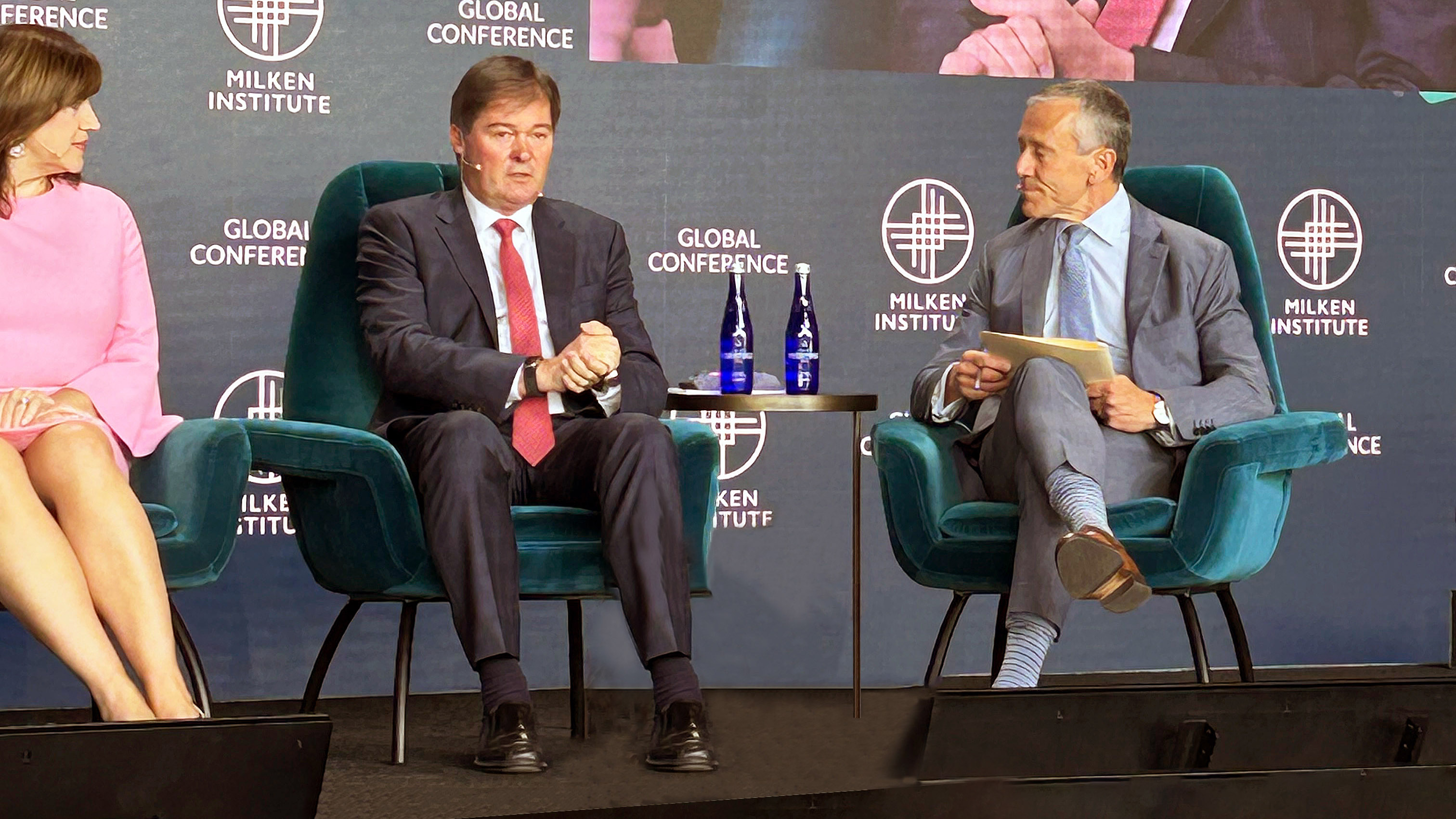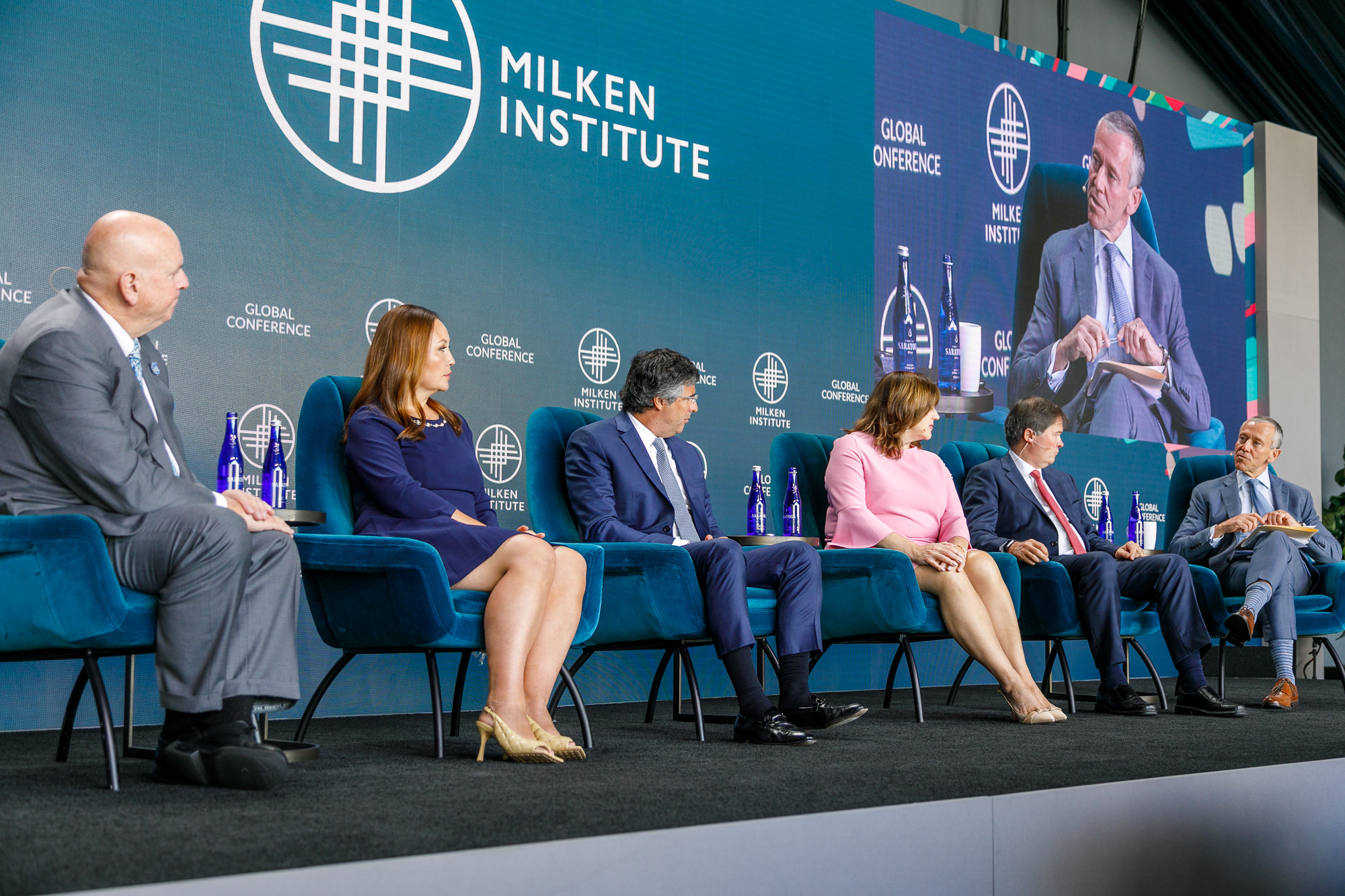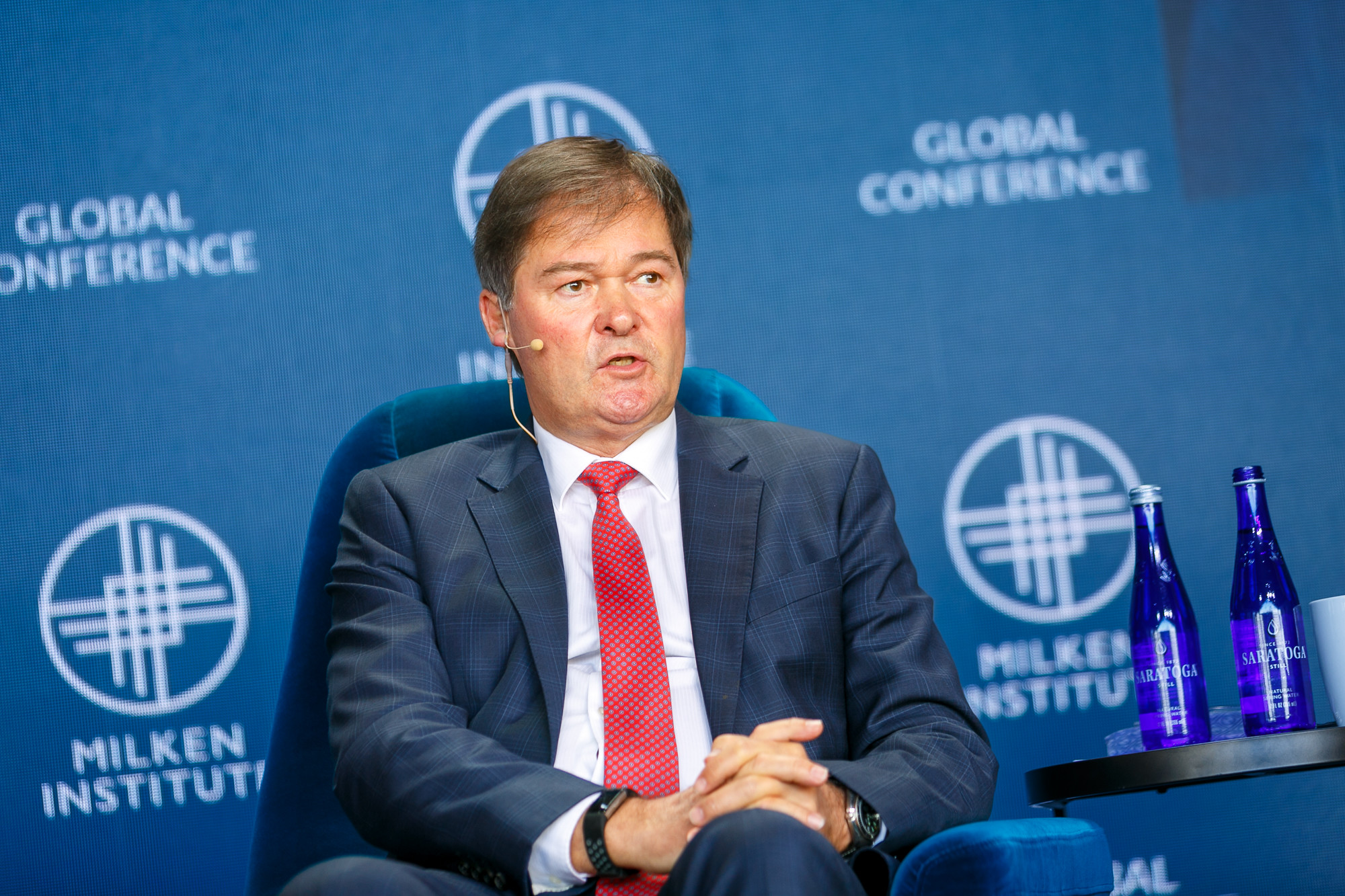Inflation among key factors for investing decisions
CEO Jo Taylor discusses leading Ontario Teachers' through global turbulence at the Milken Institute Global Conference
At a glance
- During a panel discussion at the Milken Institute Global Conference, President and CEO Jo Taylor outlined how Ontario Teachers’ is responding to global turbulence.
- We try to maintain a balanced portfolio that can withstand shocks in the world by carefully assessing the risks we’re taking and getting paid for the risks we take.
- What we're trying to do is make sure the businesses we back are conscious about [their] climate footprint, but also layer in new opportunities with new sources of energy and power.
How global investors are navigating volatility
How are leaders steering their organizations through today's volatility? Recently, Ontario Teachers' CEO Jo Taylor participated in a panel discussion called “The Only Way Forward — Leading through Global Turbulence," hosted by the Milken Institute Global Conference. Among the topics tackled by the panel: inflation, decarbonization, agility and more. Below are some key questions posed during the discussion and Taylor's explanation on how he's helping to lead the C$247B pension plan through challenging economic times.

What are some of the key factors informing your investment decisions?
Jo Taylor: Probably, the biggest issue influencing our outlook at the moment is inflation. Our liabilities are inflation linked, so they go up as inflation goes up. And we've seen other situations more recently where if you don't match your activities to your liabilities, you can get into difficulties beyond just liquidity.
What we try to think about is getting a balanced portfolio that will withstand the shocks and the turbulence we see in the world. But also, we're very focused on looking to make sure we've appropriately assessed the risk we're taking, and we get paid for the risk we take.
Ontario Teachers' is very fortunate that we're large in terms of assets we look after for our stakeholders, but as a business we're nimble and relatively small. We have 1,500 people around the world and that allows us to be pretty agile in the way we behave, the way we think and the way we try to innovate.

Ontario Teachers' is targeting $300B by 2030. What are some advantages for such a large pool of capital, and does it restrict agility?
Jo Taylor: The biggest advantage we've [found] from scale is that we can build our investment team to be able to source and execute interesting opportunities around the world. Another thing is investors with larger pools of capital can look at opportunities with very attractive returns because you're able do it without debt. Or you can [target] companies of a size where not everybody can play. Competitively it's more attractive.
A challenge with scale is how to maintain a common approach and clarity of communication. Ontario Teachers' is very fortunate that we're large in terms of assets we look after for our stakeholders, but as a business we're nimble and relatively small. We have 1,500 people around the world and that allows us to be pretty agile in the way we behave, the way we think and the way we try to innovate.
It's really important that the senior colleagues around the business try to encourage everybody to think like we're a small business, albeit that we're operating a number of assets for our members. Through a combination of the way we've been set up and the way we're able to think, we've been able to change the allocation we have of our capital over the last two or three years to try and make sure we both access returns that are more consistent with the current market outlook, but also avoid some of those segments where we're going to make less attractive returns. Because for a more mature pension plan, one of the key criteria is to take out the volatility of our returns so that we make consistent returns on a year-by-year basis and remain funded for our members.
When you're trying to access private markets, do you feel that you need to be in those geographies?
JT: We're in a number of private asset categories, including private equity infrastructure and more recently in venture and growth sectors. We want to do this predominantly through our own investing team, so about 80% of what we've invested [has been] through our own people, rather than through third party funds. We do that to avoid fees and carry. We do work with outside funds, particularly [those that] either have a geographic knowledge we want to access or [that engage in] bespoke activities they're better at than we are.
What are your views on investing in private vs. publicly listed companies?
JT: The key question, [in addition to] making a return on assets that we want to acquire or invest in, is to make sure those businesses behave in a way that's appropriate [to] our value set. We want to make sure we've got some influence. It's easier to do that if we're a controlling investor or a significant minority investor, rather than [holding] a very small stake [where we're] not able to direct or encourage the business to do what we think is best in terms of gender equity and inclusion, climate footprint reduction or some of the social values that we think are important.
Probably the easiest way to do that is [with] a private business, where you can have that control and ownership. But if we're investing in public companies, we make sure we do one thing at a minimum— vote and give feedback to those management teams about whether they are performing up to our expectations from a financial point of view.


Tell us about Ontario Teachers' climate strategy, including decarbonization and fossil fuels.
JT: [For] our existing portfolio, we've set out some pretty clear goals about [helping] our companies collect data to know what their carbon intensity footprint is and then find ways to reduce it. On the new activity side, we [work with] industries which may not be as attractive to many investors but have high levels of carbon where we can help them decarbonize. We do that partly to make a positive contribution, but also we think we can make good returns by having a business in our portfolio that's better set after our involvement. Some of that change will take a reasonable amount of time. [This means] you have to be accurate in terms of your assessment of how long it's going to take, what it's going to cost, and does it look like a good investment over that course [of time].
A common question I always get asked is, how do you feel about fossil fuels. The answer I've always given is that we're trying to operate on a basis where there will be some fuels which will be necessary for a transition over the next 10 or 15 years. To some extent nuclear power and certainly natural gas will feature there. What we're trying to do, while that's going on, is make sure the businesses we back are conscious about [their] climate footprint, but also layer in new opportunities with new sources of energy and power.
We're very keen on electricity transmission as one way of providing greener energy around the world. We're also looking at newer sources of power. We've done quite a lot of work around hydrogen, looking at fusion, looking at some innovative ideas of moving forward in those industries. We have a target of moving green assets within our portfolio from about $33 billion to $50 billion, but [ensuring] we make an appropriate rate of return.


